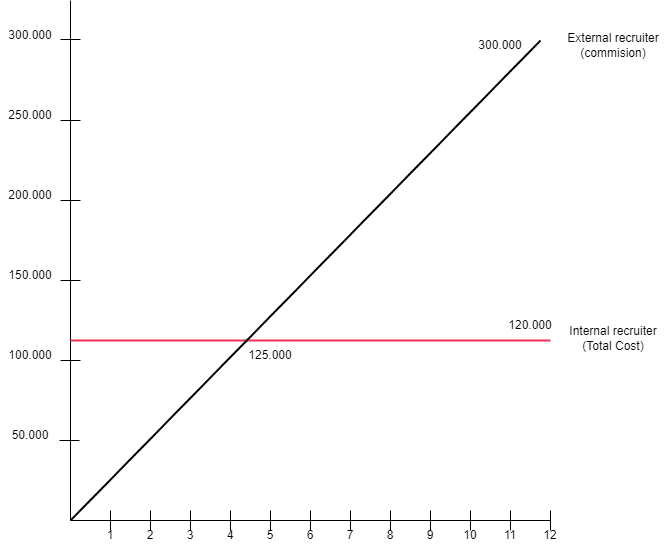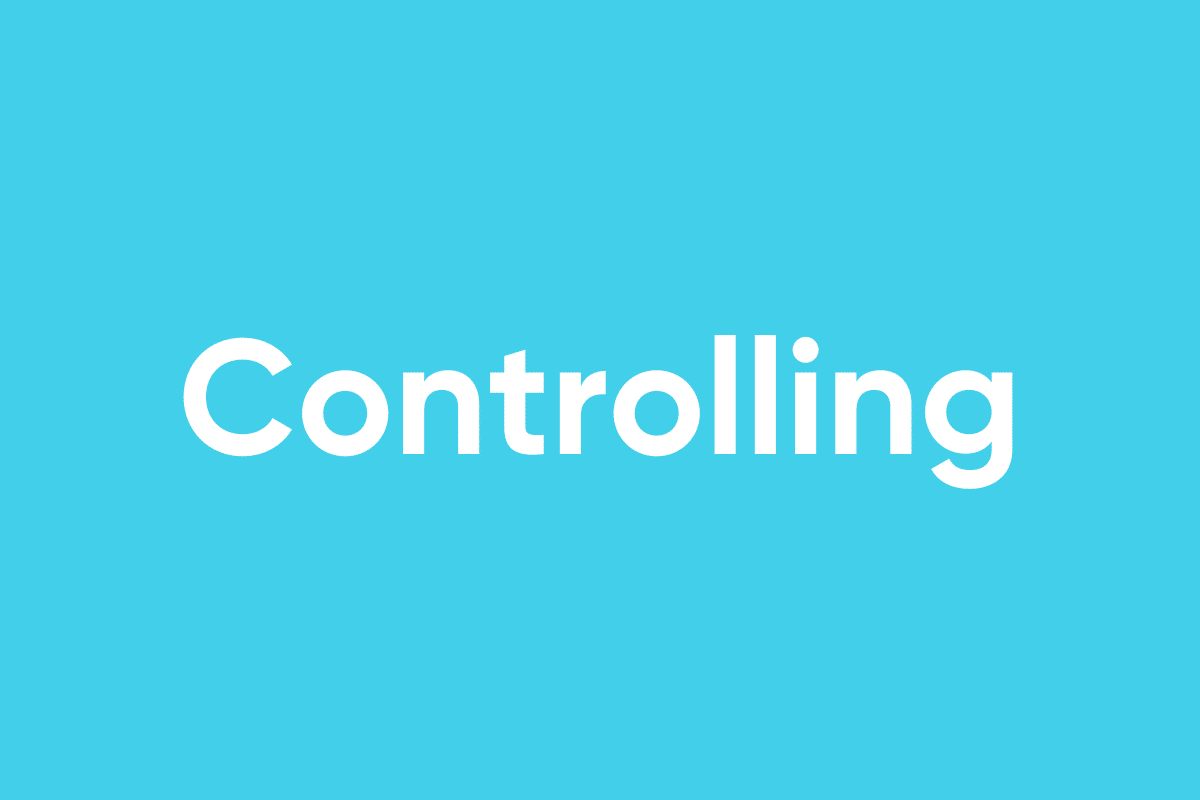Recruiting team planning: talent acquisition in hiring
When hiring, most companies have employees in various departments in mind. But what if there is yet to be a recruiting team? Then, it must first be set up. Ideally, this should be done in a targeted and planned manner from the start.
But how many recruiting employees does a company need? And is it even worth recruiting employees internally? This article provides a numbers-based approach to talent acquisition in hiring.
Building a recruiting team: top-down or bottom-up?
When building up a company, there comes a point when company founders need more time to recruit enough staff themselves. They then need hiring specialists to take on this task. There are now two approaches to building your recruiting team:
- Top-down hiring: The optimal approach would be to hire a team leader with expertise first. This person introduces efficient processes directly, builds up the department and gradually assembles an efficient hiring team.
- Bottom-up hiring: The necessary budget is often unavailable to start immediately with a highly qualified lead. Many entrepreneurs then decide to use other employees or hire less experienced recruiters. Only later, when it is financially viable, do they employ the lead. This lead must subsequently optimize the existing team and create uniform processes.
Gross vs. net hiring: How many employees do we need to hire?
Let’s assume a company wants to grow from 100 to 120 employees. How many hires would be required to achieve this goal? There needs to be more than 20 new hires. This is because staff turnover (e.g. resignation, retirement) means that members regularly leave the team.
How many new employees need to be hired to increase the headcount by 20 people depends on the retention rate (employee loyalty to the company). For example, if this is 90 per cent, this means a loss of 10 employees in one year, based on our example. You would have to recruit 30 new employees (gross) to have 20 additional employees (net) available.
In companies with very low staff turnover, this factor is less noticeable. However, it is different in companies with a high willingness to change. It is said that, on average, Amazon loses the staff of three entire warehouses daily (!). The hiring requirements here are correspondingly high to maintain the status quo and increase staff numbers. Therefore, entrepreneurs must move away from general industry KPIs and include their figures.
How many recruiters are required for this?
We know how many employees we want to hire. But now comes the all-important question: How many recruiters do I need to manage this increase in the team? Unfortunately, there are no reliable benchmarks for this, as the effort required to recruit new employees varies not only depending on the industry but also on the job. It makes a massive difference in terms of effort, and the time it takes to fill a position, whether you want to hire customer care employees or CTOs.
How many new hires does a recruiter make in a year? This figure can vary from 5 to 50 placements, depending on the job to be filled. Most recruiters make around 20 to 30 new hires per year. The number can be significantly higher in sectors with an employer-friendly applicant market. However, if you are recruiting sought-after specialists or experienced managers, you should aim for the lower end of the range.
Operational team planning: How many live positions per recruiter?
Entrepreneurs must also look at their potential workload to plan the number of recruiters. To do this, the recruiting team must make a distinction according to the priority of the positions. Positions with high urgency cannot be processed in any number. In addition to jobs with priority 1, recruiters also work on essential jobs that need to be filled in timelier, which can be filled later.

To calculate the productive time of recruiters, around 25 per cent must first be deducted from an exemplary 40-hour week. On the other hand, the hiring team only works for a few minutes to fill vacancies and spends time in meetings, internal discussions, projects, or briefings. This leaves only 30 hours of productive time per week out of 40 (40 hours x 0.0.75 = 30 hours). In addition, there is vacation and sick leave (approx. 35-40 days)
Based on these available hours, it is now possible to calculate how many positions recruiters can fill. They invest around 12 hours in a position with priority 1. Priority 2 vacancies require around four hours weekly for active sourcing or interviews. In priority three positions, employees spend around one hour weekly on job advertisements, communication with applicants and interviews. Based on this data, the following planning for productive time could result:

On this basis, the number of vacancies to be filled can be used to plan how many recruiters the hiring team should consist of.
Make or buy: Is it worth bringing recruiting in-house?
The “make or buy” question runs through all company areas and does not stop at the HR department. Is it worth setting up an in-house hiring team, or would the company be better off with an external recruiter? There is no general answer to this question. Instead, the answer depends on several factors, such as the number of vacancies to be filled and the continuity of personnel requirements (e.g. short-term staffing in seasonal companies).
The costs of the in-house solution and external recruiters must be compared to answer this question. The following calculation example shows how this works.
“Buy” – how much do external recruiters’ cost?
Let’s assume that the company hires external recruiters to recruit new employees. The costs for this amount to 25 per cent of the annual gross salary of 100,000 euros per new hire. That’s 25,000 euros for one filled position, 50,000 for two and 125,000 for five.
“Make” – how does internal hiring compare?
For an internal tech recruiter, let’s calculate pure wage costs of 80,000 euros per year. We multiply this by a factor of 1.5, including downtime (vacation, illness, etc.) and non-wage labour costs (e.g. social security). The total costs are therefore 120,000 euros per year.
When does internal recruiting start to pay off?
A classic break-even analysis based on the two calculated figures can now be carried out. For example, if the company only hires two people, the costs for external recruiters are much more manageable than for internal hiring experts. In this case, 50,000 euros is compared to 120,000 euros in wage costs.
However, the situation is different when five positions are filled. The costs of the external personnel consultancy are already 125,000 euros. The internal solution, on the other hand, stands at 120,000 euros. This means that the break-even point is reached from five filled positions per year, and setting up your talent acquisition team is worthwhile. The more positions are served annually by an internal recruiting team, the better the calculation works out.

However, there are two shortcomings with this purely economic approach:
- The quality of internal recruiters cannot be considered. While external recruiters are paid according to their success, internal employees receive their salary even if they do not recruit suitable candidates. The extent of the individual network also plays a role here.
- The time frame cannot be considered either. If many positions need to be filled simultaneously, the external solution can be scaled as required. On the other hand, internal recruiters reach the limits of their capacity in terms of time, while they spend the rest of the year just doing their time. An internal HR department can only be scaled up quickly to a limited extent.
This means that economic consideration can only be part of the overall “make or buy” decision.
Magic triangle: the importance of costs in recruiting
A numbers-based approach to recruiting is courageous – after all, we are talking about people who are challenging to quantify in forecasts and figures. This is also evident when you look at the magic triangle of recruiting:
- Speed of new hires
- Hiring costs (in particular, the salary of the future employee)
- Quality of the candidates hired (qualifications for the position)
It is not possible to hire perfect candidates in the shortest possible time at minimal cost. As a rule, only two of these goals can be achieved. Conversely, this means that If the company has an acute need for personnel and requires specialists at short notice, costs must inevitably take a back seat. This is because highly specialized IT positions or CTO vacancies cannot be filled within a very short space of time with a small budget.











